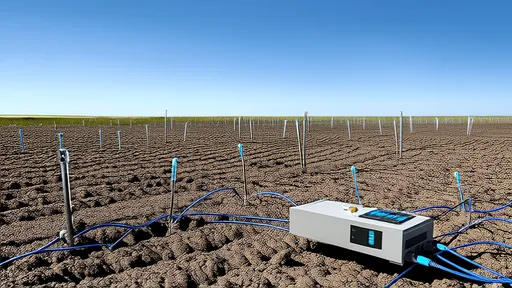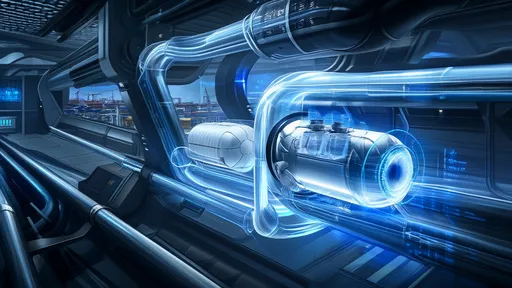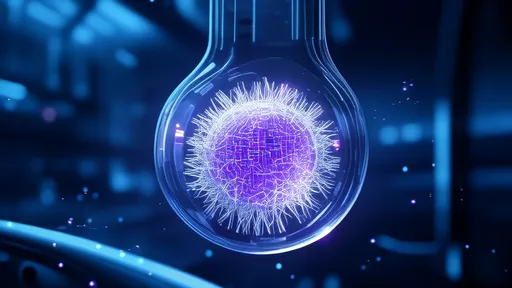The field of neuromorphic computing has taken a significant leap forward with the development of memristor arrays capable of emulating synaptic plasticity. These bio-inspired chips, often referred to as "neuro-mimetic" hardware, are designed to replicate the brain's ability to learn and adapt through dynamic reconfiguration of connections. Unlike traditional von Neumann architectures, which separate memory and processing, neuromorphic systems integrate these functions—much like the human nervous system.
At the heart of this innovation lies the memristor, a nanoscale device whose resistance changes based on the history of applied voltage. This property mirrors synaptic weight modulation in biological neurons, where the strength of connections adjusts in response to neural activity. Researchers have successfully demonstrated that densely interconnected memristor arrays can exhibit spike-timing-dependent plasticity (STDP), a fundamental mechanism underlying learning in biological brains. The implications are profound: such systems could enable machine learning at unprecedented energy efficiency and speed.
Fabrication breakthroughs have enabled the creation of large-scale, reliable memristor crossbar arrays. Early prototypes suffered from device variability and endurance issues, but novel materials like hafnium oxide and engineered interfaces have dramatically improved performance. What makes these arrays particularly compelling is their ability to perform in-memory computing—executing matrix-vector multiplications inherently through Ohm's Law and Kirchhoff's Law. This eliminates the energy-intensive shuttling of data between separate memory and processor units that plagues conventional AI hardware.
The most striking demonstrations involve real-time learning in hardware. In one experiment, a memristor array trained on handwritten digit recognition achieved 94% accuracy through on-chip learning, matching software-based neural networks while consuming three orders of magnitude less energy. Unlike static AI chips that require pre-trained models, these adaptive systems can continuously refine their performance as new data arrives—a capability critical for edge computing applications where conditions constantly evolve.
Challenges remain in scaling this technology. Device-to-device variability, while improved, still impacts learning consistency. Researchers are exploring hybrid approaches that combine analog memristor arrays with digital correction circuits. Thermal management also becomes crucial at high densities, as the heat generated by thousands of simultaneously switching devices can affect memristor stability. Some teams are investigating phase-change materials as an alternative, though these typically operate at slower timescales than their oxide-based counterparts.
Industry adoption is accelerating, with several semiconductor giants announcing neuromorphic chips that incorporate memristive elements. These aren't laboratory curiosities anymore—commercial prototypes are being tested for applications ranging from always-on sensors to autonomous vehicle control systems. The military sector has shown particular interest, funding projects that could lead to unmanned systems capable of real-time adaptation in unpredictable environments.
Looking ahead, the convergence of memristor technology with emerging brain-computer interfaces suggests even more radical possibilities. Imagine prosthetic devices that don't just mimic biological movement but actually learn and adapt to their user's neural patterns. Or consider environmental sensors that evolve their detection algorithms based on seasonal changes. The era of truly intelligent hardware may be dawning, not through brute-force computation, but by embracing the brain's elegant principles of self-organization.
Ethical considerations inevitably follow such transformative technology. As these systems approach biological levels of adaptability, questions arise about accountability in decision-making and potential emergent behaviors. The research community is proactively establishing guidelines for responsible development, recognizing that neuro-inspired hardware might eventually require new paradigms for testing and validation. Unlike conventional software, these systems' ability to autonomously reconfigure makes their behavior inherently less predictable.
The next five years will likely see neuromorphic chips transition from research labs to commercial products. Early applications will probably focus on specialized tasks where energy efficiency and real-time learning provide decisive advantages over traditional processors. As manufacturing matures and design tools improve, we may witness the emergence of general-purpose neuromorphic computers—systems that don't just simulate intelligence but embody it through physical architecture that mirrors life's own information processing machinery.

By /Jul 18, 2025

By /Jul 18, 2025

By /Jul 18, 2025

By /Jul 18, 2025

By /Jul 18, 2025

By /Jul 18, 2025

By /Jul 18, 2025

By /Jul 18, 2025

By /Jul 18, 2025

By /Jul 18, 2025

By /Jul 18, 2025

By /Jul 18, 2025

By /Jul 18, 2025

By /Jul 18, 2025

By /Jul 18, 2025

By /Jul 18, 2025

By /Jul 18, 2025

By /Jul 18, 2025